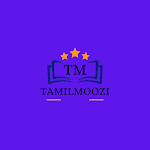India experienced an early development of cultures and civilisations. Since the Old Stone Age, several groups in India had migrated multiple times and made cultural adaptations to diverse eco-zones. Each group evolved its own culture responding to their living experiences in each place, which eventually led to pluralistic
beliefs and systems. From a life of foraging through nomadic pastoralism, the settlers in Indus region reached a matured stage of living
in the Bronze Age.This chapter focuses on the history of India from the first settlement of humans in the Stone Age, up to the decline of the Indus Civilisation.
It dwells on the Neolithic cultures as well.
Archaeological sources form the bedrock of information for us to understand this long span of time in Indian history. They include archaeological sites, geological sediments, animal bones and fossils, stone tools, bone tools, rock paintings and artefacts. There is no written evidence for this period. Although the Harappans used a script, it is yet to be deciphered.
The human genes also constitute an important source for understanding pre-
historic migrations. The mitochondrial DNA (mt-DNA) studies provide information on pre-historic migrations. Scientists are trying to extract ancient DNA from the bones of the pre- historic era to understand human dispersals. Language is another important source of history. Indo-Aryan, Dravidian, Austro-Asiatic and Tibeto-Burman language families have flourished in India. These languages developed
and evolved during the various phases of migrations in Indian history.
After about 4,00,000 years BP (BeforePresent), changes took place in the lithic
technology and the species of human ancestors diverged. The species of Homo erectus existed in this period. Some of the Middle Palaeolithic tools are attributed to behavioural modernity.Anatomically modern humans are said to have emerged around 3,00,000 years ago. In India, the Middle Palaeolithic phase was first
identified by H.D. Sankalia on the Pravara River at Nevasa. After this discovery, several sites of this period have been identified. Recently, the Middle Palaeolithic of Athirampakkam is dated to be around 3.85-1.72 lakh years BP. Indian
Middle Palaeolithics probably may be as old as the African Middle Palaeolithic culture.
TNCMTSE 2023 - Paper 1 Exam - Original Question Paper







0 கருத்துகள்